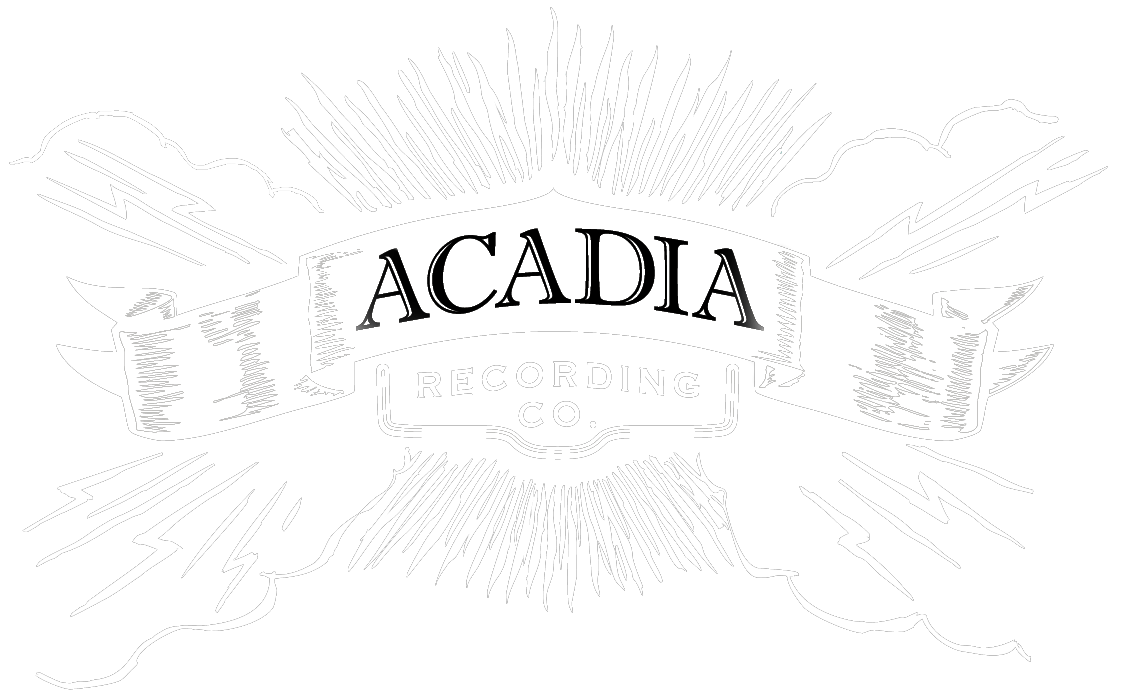What to Listen To: Jordan Guerette’s Playlist
This is the second in our new series of playlists curated by some of our favorite musicians/bands that have come in to record at Acadia! (listen to Nate Manning’s inaugural playlist here). This playlist was made by Jordan Guerette, a multi-talented musician who you may know from his guitar playing in Falls of Rauros. Jordan focused this playlist on music that influenced the first record from his latest project, Forêt Endormie (The record is Étire Dans Le Ciel Vide) which is an incredible chamber ensemble based in Portland. Take a listen and check out Jordan’s notes for each tune below:
1. “Twa Corbies” by Sol Invictus from The Devil’s Steed (2005)
For me, Sol Invictus are the epitome of neofolk, and Tony Wakeford’s voice defines the genre. This is my favorite Sol Invictus song and probably my favorite in the genre in general; the bizarre, distorted-guitar-and-horns arrangement with Wakeford’s extraordinarily melancholy lyrics and English folk melody makes it a classic.
2. “String Quartet No. 1 Mvt. I: Adagio – Con moto” by Leoš Janáček (1923)
Janáček’s syrupy harmonies and achingly melancholy melodies in this movement have made it an all-time favorite of mine. The entire quartet is more than worth any curious listener’s time.
3. “Emily” by Joanna Newsom Ys (2006)
Joanna Newsom is the artist that I cherish more than any other. Newsom’s compositions, playing, and lyrics are already fully-matured on her second album, and the results here are sublime. Please listen to this song if you have to pick one from this list. (Of course…it’s not on Spotify, so we’ve included the YouTube video)
4. “Hung From The Moon” by Earth Bees Made Honey in the Lion’s Skull (2008)
Earth is probably the only band in the world that has an album composed of just unaccompanied guitar riffs that are actually worth listening to (Phase 3: Thrones and Dominions). This song is from their post-reunion era which features jazz pianist Steve Moore. Moore’s idiomatic improvisation in this track pushes Dylan Carlson’s composition to perfection.
5. “Stained Glass” by Kayo Dot Stained Glass (2011)
Toby Driver’s Kayo Dot is best known for changing their sound all the time. I actually like their last two albums Comets on Io and Plastic House on Base of Sky the most, but this EP was my introduction to the band and its improvisatory, almost ambient soundscape really had an effect on me. I believe that this EP was a factor in my developing love of the vibraphone.
6. “La cathédrale engloutie” by Claude Debussy (1910)
Debussy’s harmonic world has pretty much become the basis for what I write. Debussy’s musical symbolism is so evocative of this “Sunken Cathedral” that I find it impossible to not think of being submerged during the majority of this piece. Debussy took inspiration from the Legend of Ys, in which the cathedral sometimes rises above the surface of the ocean. The moments during which the cathedral arise are so obvious in this piece due to Debussy’s ability to conjure specific, concrete images with instrumental music.
7. “Vingt Regards sur l’enfant-Jésus: 1. Regarde du Père” by Olivier Messiaen (1944)
Messiaen is another giant of French classical music, and this suite of piano pieces has its own harmonic world that uses familiar chords like the major triad in a way that is so atypical of Western music that they begin to form new identities.
8. “God Bless Our Dead Marines” from Horses in the Sky by Silver Mt. Zion (2005)
Silver Mt. Zion began as an instrumental classical-ish band and I love those early records, but this is the first Silver Mt. Zion album that I had an obsession with. The vocal round is both simple and sophisticated, hopeful and melancholy. There is also a verse about lyricist Efrim Menuck’s dog that usually makes me choke up.
9. “Red Seas” from The Creatures in the Garden of Lady Walton by Clogs (2010)
This is a beautiful song from a beautiful album by Clogs, brainchild of Padma Newsome and Bryce Dessner. The arrangement is interesting, including bassoon and strings, but it is really Newsome’s gorgeous vocals that make this song really special.
10. “Gymnopédie No. 3” by Erik Satie (1888)
The master of melancholy piano music. Satie is unbeatable in his understated, strange, yet immensely memorable melodies and sense of harmony. His music is so accessible, yet heady and worth academic study. The melody of this piece strikes a particular resonance with me at this moment, but I could have chosen any of his Gymnopédies, Gnoissiennes, or Nocturnes.
We’ve also included Jordan’s record Étire Dans Le Ciel Vide at the end of the playlist: take a listen and see if you can hear some of the influences! As always, happy listening!
